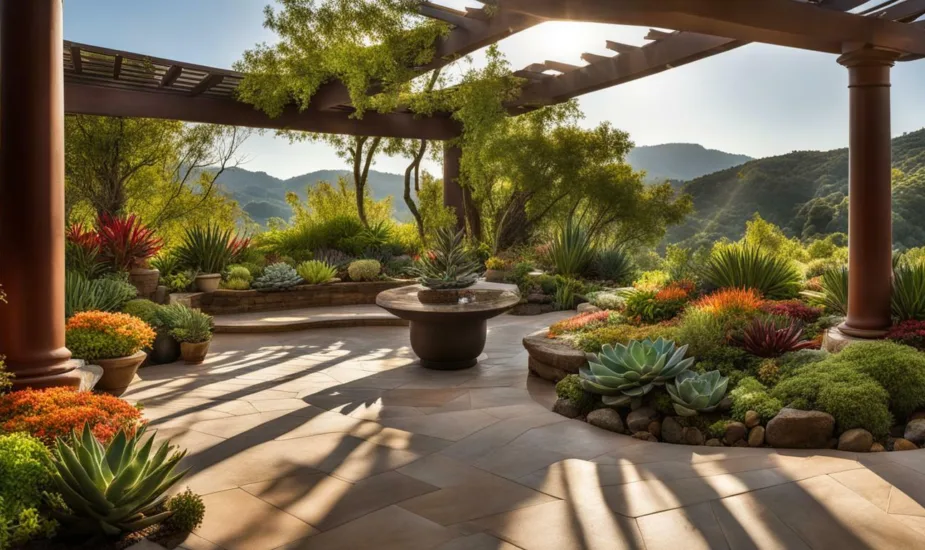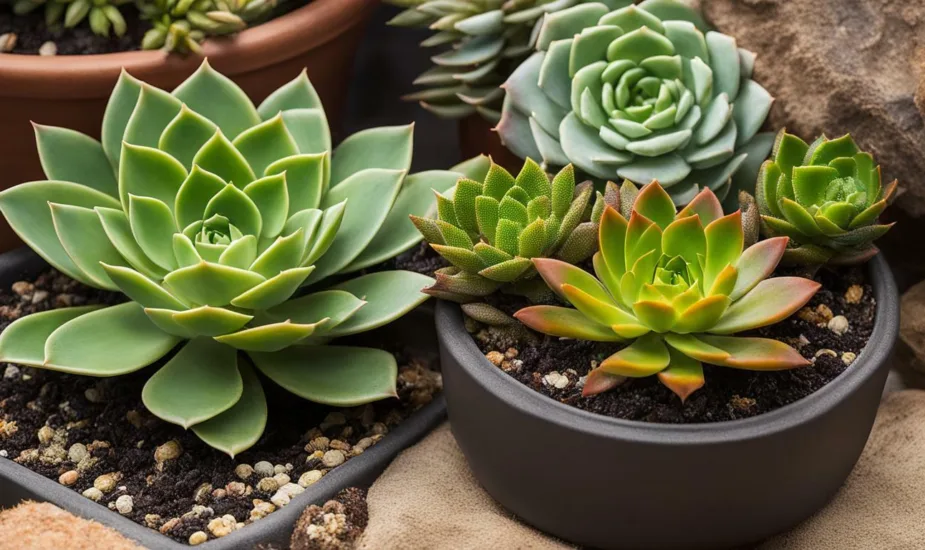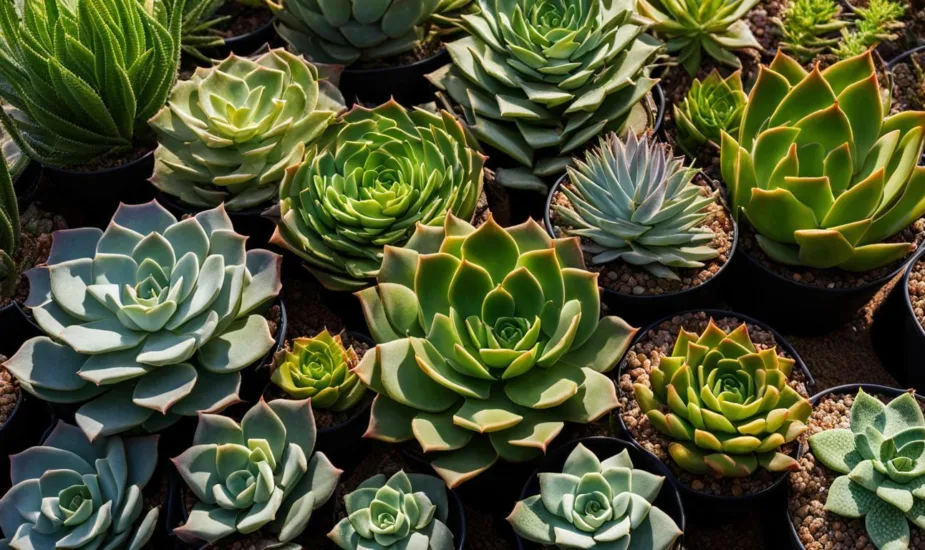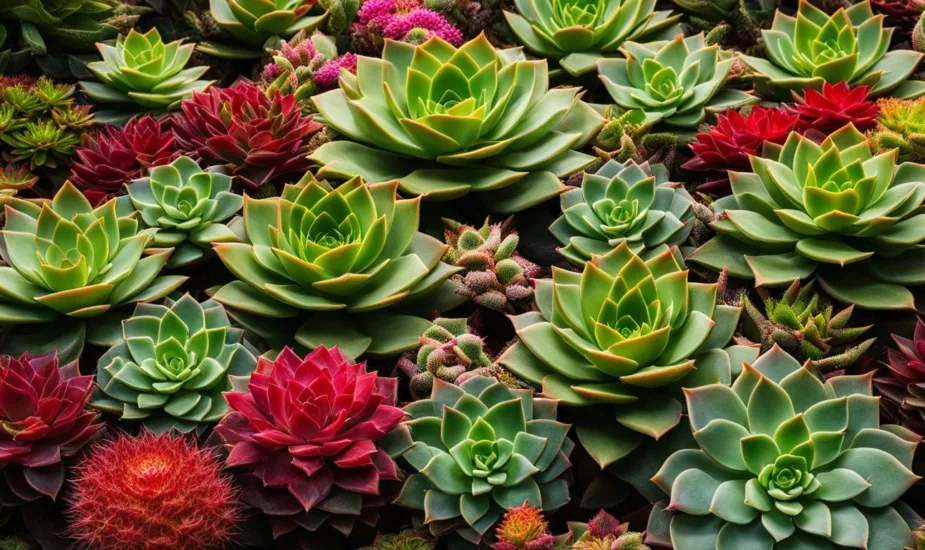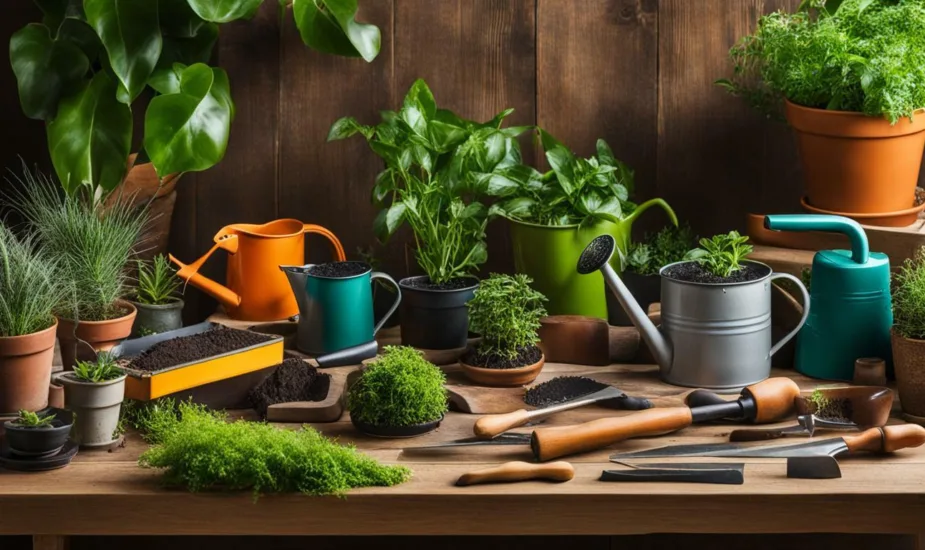Creative Urban Gardening Ideas for Your Urban Jungle
Urban gardening, in my opinion, is more than just a pastime. It is a means of connecting with nature, improving the environment, and improving the quality of life in our cities. Even the smallest urban space may be transformed into a lush green haven with the appropriate urban gardening ideas.

In this section, I will share some creative ideas and design suggestions to help you get started on your urban gardening journey. Whether you have a balcony, rooftop, or small outdoor area, these tips will inspire you to create your unique urban garden.
Key Takeaways:
- Urban gardening is a way to connect with nature in the urban setting.
- With the right ideas and design, any urban space can transform into a green oasis.
- Stay tuned for tips on DIY projects, small space gardening, vertical gardening, and more.
DIY Urban Gardening Projects
If you’re looking to create your urban garden from scratch, DIY projects are an excellent way to get started. Not only are these projects a fun and fulfilling way to create your green space, but they also offer a hands-on approach, allowing you to personalize your garden and make it truly unique.
One of the simplest DIY urban gardening projects is to create a raised bed garden. This is a perfect project for beginners and can be completed in just a few hours. To build a raised bed, you will need lumber, screws, and soil. Cut the lumber to the desired dimensions and screw the pieces together to create a box. Fill the box with soil, and you’re ready to start planting!
If you’re looking for a more advanced DIY project, try building a vertical garden. This type of garden is ideal for small spaces and can be created using various materials, including pallets, gutters, or hanging planters. To build a vertical garden using a pallet, secure landscaping fabric to the back of the pallet and add soil and plants to the remaining spaces. Hang the pallet vertically using hooks, and you’re ready to enjoy your new vertical garden.
| Benefits of DIY Urban Gardening Projects: |
|---|
| 1. Cost-effective: DIY projects are often less expensive than hiring a professional landscaper. |
| 2. Customizable: DIY projects allow you to create a garden that is unique to your personal taste and style. |
| 3. Sustainable: By using recycled materials or choosing eco-friendly options, you can promote sustainability in your urban garden. |
Whether you’re a seasoned gardening pro or just starting, DIY urban gardening projects offer endless possibilities to personalize and enhance your urban space. So roll up your sleeves and get ready to create a green oasis in the heart of the city.

Small Space Gardening Solutions
Living in the city often means compromising on outdoor space. However, with some creativity and ingenuity, you can transform even the smallest of areas into a green oasis. Here are a few small space gardening solutions that will help you get the most out of your limited space.
Vertical Gardens
Vertical gardening is an excellent solution for small spaces as it allows you to grow plants vertically using various structures such as walls, fences, and trellises. You can grow a wide range of plants, including flowers, fruits, and vegetables, in vertical gardens. Such gardens can also serve as a beautiful addition to your home decor. For instance, you can create a living wall using modular panels or use a bookshelf as a vertical garden.

Container Gardening
Container gardening is a popular form of small space gardening that allows you to grow plants in pots, baskets, or other portable containers. You can grow a wide range of plants, such as herbs, flowers, and small vegetables, in containers. Container gardens also provide the flexibility to move plants around, which is ideal if your outdoor space is limited or you want to experiment with different plant placements.
Balcony Gardens
A balcony garden is an excellent way to utilize your small outdoor space effectively. You can use hanging baskets, railing planters, or tall containers to create a beautiful garden on your balcony. You can grow various plants, such as flowering plants, vegetables, and herbs, in a balcony garden. A balcony garden also provides privacy and a beautiful outdoor space for relaxation.
These are just a few small space gardening solutions that you can explore. With a little creativity, you can transform even the smallest urban space into a green oasis.
Vertical Gardening Ideas
If you are seeking a space-saving and visually appealing way to garden in your urban setting, vertical gardening may be just what you need. By growing plants vertically, you can add lush greenery without taking up valuable floor space.
One option for vertical gardening is using wall planters. These can be mounted on walls or hung from railings or hooks. They come in a variety of shapes and sizes, making them suitable for various plants, from small herb plants to trailing vines.
Another way to create a vertical garden is by using a trellis. Trellises provide support for climbing plants like cucumbers, tomatoes, and beans. They also offer a beautiful structural element in the garden, adding visual interest to your space.
| Benefits of vertical gardening: | Vertical gardening tips: |
|---|---|
|
|
Vertical gardening is an excellent way to add a touch of greenery to your urban space. With careful planning and a little creativity, you can transform a bland, vertical wall or structure into a living, breathing garden.

Urban Gardening for Beginners
If you are new to urban gardening, there are a few essential tips to keep in mind to get you started. Firstly, consider the space you have available and the amount of sunlight it receives. Understanding your space will help you select suitable plants that thrive in your environment.
Next, it’s important to understand soil composition and drainage. Urban environments often have poor soil quality, so adding compost or other organic matter can help improve soil fertility. Additionally, ensure proper drainage to prevent waterlogging and root rot.
Starting with easy-to-grow plants such as herbs, leafy greens, and tomatoes can help build confidence and experience in gardening. Container gardening is also a great option for beginners, as it allows for flexibility in positioning and mobility.
Finally, don’t be afraid to experiment and try new things. Gardening is a learning process, and mistakes are inevitable. Embrace the journey and enjoy the rewards of growing your own food and creating a green oasis in the city.

“The glory of gardening: hands in the dirt, head in the sun, heart with nature. To nurture a garden is to feed not just the body, but the soul.” – Alfred Austin
Creating an Urban Vegetable Garden
There’s nothing quite like the satisfaction of growing your vegetables, and urban gardening makes it possible in even the tightest of spaces. A thriving vegetable patch can be a reality, even in the midst of a bustling city. Here are some essential tips for creating your very own urban vegetable garden:
| Tip | Description |
|---|---|
| 1 | Choose the right vegetables |
| 2 | Opt for container gardening |
| 3 | Maximize your harvest |
Tip 1: Choose the right vegetables
Not all vegetables are suitable for urban gardening. Some thrive in limited spaces and do not require extensive root systems, making them the perfect choice for your vegetable patch. Ideal vegetables for urban gardening include cherry tomatoes, lettuce, spinach, radishes, green onions, and chard. These vegetables grow readily in containers, making them a perfect choice for an urban garden.
Tip 2: Opt for container gardening
Container gardening is an excellent way to maximize space in your urban garden. Containers can be placed on balconies, patios, or rooftops, allowing you to grow vegetables in even the smallest outdoor areas. When selecting your container, consider the size and type of vegetable you plan to grow. Make sure the containers have adequate drainage to avoid waterlogged soil, which can lead to root rot.
Tip 3: Maximize your harvest
Maximizing your harvest is a critical aspect of urban gardening. When growing vegetables in limited space, it is essential to make the most of every inch of available space. One effective technique is vertical gardening. Vertical gardening involves growing plants on walls or structures and is an excellent way to maximize space in an urban garden. You can also consider companion planting, which involves planting complementary vegetables together. This technique can improve soil quality, reduce pests, and increase yield.
By following these essential tips, you can create a thriving urban vegetable garden, even in the midst of the city. Embrace sustainable living and enjoy the bounty of fresh produce right at home.

Cultivating an Urban Herb Garden
Herbs are an excellent addition to any urban garden. Not only do they add a burst of flavor to meals, but they also have a variety of medicinal benefits. Growing herbs is easy to do, and they can thrive in even the smallest of spaces.
When planning your urban herb garden, consider the herbs that you will use the most in your cooking. Some common options include basil, cilantro, thyme, oregano, and parsley. These herbs are easy to grow and maintain, making them perfect for beginners.
When choosing a location for your herb garden, it is essential to consider factors such as sunlight, shade, and water availability. Most herbs require direct sunlight for at least six hours a day, so consider placing your garden in a sunny spot.

Another option for an urban herb garden is to use containers. Using pots or window boxes can help maximize space while also adding a beautiful aesthetic to your urban garden. When using containers, ensure that they have proper drainage, and use a high-quality potting mix to provide nutrients to your herbs.
To keep your herbs healthy and thriving, it is essential to provide them with adequate water and nutrients. Be sure to water them regularly and fertilize as necessary. Additionally, prune your herbs to encourage growth and prevent them from becoming overgrown.
By cultivating an urban herb garden, you can enjoy the benefits of fresh herbs right at home. Whether you use them for cooking, teas, or medicinal purposes, having a thriving herb garden is a rewarding experience.
Conclusion
Urban gardening offers a wealth of opportunities to transform your urban space into a vibrant oasis. From small space solutions to vertical gardening techniques, there are numerous ways to create a green haven right in the heart of the city.
Whether you are a seasoned gardener or a beginner, these creative ideas and DIY projects will inspire you to embark on your urban gardening journey. From vegetable gardens to herb gardens, there is something for every urban gardener to explore.
So, embrace sustainable living and the joys of gardening in the city. With a little creativity, effort, and care, you can turn your urban jungle into an urban paradise, filled with lush greenery and natural beauty.
FAQ
Q: What are some urban gardening ideas for small spaces?
A: Some urban gardening ideas for small spaces include vertical gardening, container gardening, and utilizing balcony or rooftop spaces effectively.
Q: How can I start my urban garden from scratch?
A: You can start your urban garden from scratch by exploring do-it-yourself projects such as building raised beds, creating hanging gardens, or repurposing containers for planting.
Q: What are the benefits of vertical gardening?
A: Vertical gardening allows you to maximize space in tight urban areas and adds a visually appealing element to your surroundings. It also provides better air circulation and can reduce the risk of pests and diseases.
Q: What are some tips for beginners getting started with urban gardening?
A: For beginners, it’s important to select the right plants for your space, understand the composition of your soil, and effectively manage limited space constraints in the city. Start small and gradually expand your garden as you gain experience.
Q: How can I create an urban vegetable garden?
A: To create an urban vegetable garden, choose suitable vegetables for your climate and space, utilize container gardening techniques, and practice sustainable gardening methods such as composting and water conservation.
Q: Can I grow herbs in my urban space?
A: Absolutely! You can cultivate a thriving herb garden in your urban space by growing herbs indoors or utilizing small outdoor patches. Herbs are versatile, easy to grow, and offer a range of culinary and medicinal benefits.
 Little Garden Tips
Little Garden Tips




